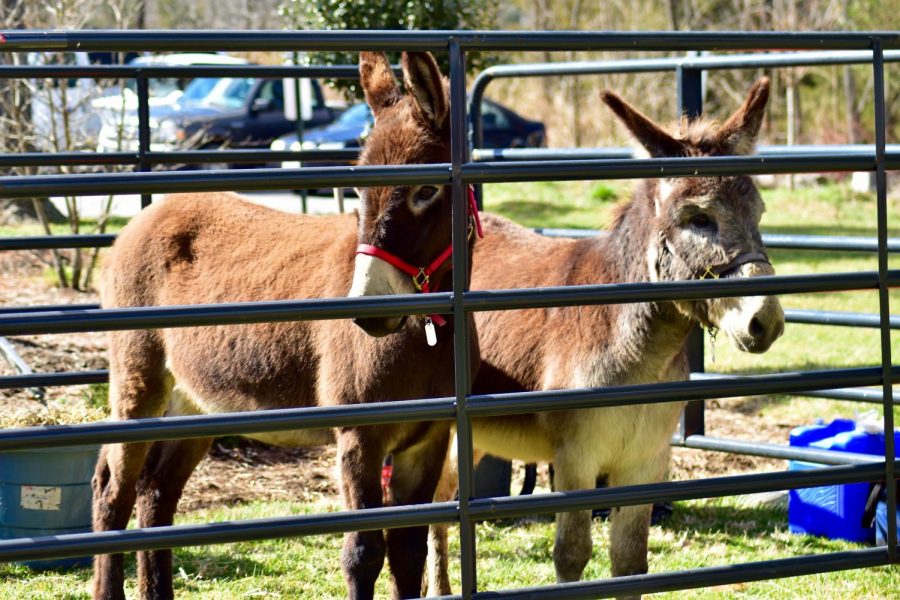Donkeys greet Session One spectators
February 14, 2020
As students and spectators make their way to the Duchossois Tennis Center for Mock Convention Session One, they are not greeted by a smiling staff member. Rather, two grazing donkeys in a 12-by-12 pen adjacent to the building snuffle and snort as if to welcome guests.
The equines are part of a family of four rescue donkeys cared for at Hogback Farm in Kerrs Creek, just west of Washington and Lee’s campus. Class of 1980 alum Kevin McCusty and his partner Scott Robertson manage the private farm, as well as The Donkey Bar, a homely place to enjoy drinks and donkey art. The donkeys are brought into the same building as the bar for some quality time with visitors, and all money made on the art and libations is matched dollar for dollar and sent to the T&D Donkey Rescue non-profit organization. In the past three years, the Bar has raised $17,000.
As conventiongoers pause on their way to the Tennis Center to pet the donkeys, many ask McCusty and Robertson whether they can ride the animals. The handlers explain that these donkeys are of standard size and cannot be ridden without the possibility of danger and pain.
Donkeys are bred in three sizes: miniature, standard and mammoth. Two mini donkeys made their debut in the parade earlier today. Mammoth donkeys can be safely ridden; however, Roger and Monty, the standard-sized donkeys welcoming spectators to the Convention, cannot.
McCusty explains that the standard-sized donkey is the official size of the Democratic Party mascot, a symbol that first came into use in 1870.
“This has been a lot of fun, bringing the donkeys here today,” Robertson says. “And the donkeys seem like they’re having a lot of fun, too.”
“It’s good to educate people about donkeys,” McCusty adds. “A lot of people don’t know that they are very much endangered.”
According to BBC News, the world’s donkeys are facing a population crisis due to the high demand for their skins in China, where they are used to make health foods and traditional medicine.
“Donkeys bond,” Robertson explains. “Roger and Monty are a bonded pair, and the other two on our farm are as well.”
Donkeys can bond with other animals such as horses, but usually do so with other donkeys. One donkey will stand watch as the other sleeps. Single donkeys often experience mental and physical complications. They are, by nature, partner-preferring animals.
“You could say I bonded with Monty here,” Robertson says with a grin.
The donkeys seem to have made quite the positive impression on conventiongoers, as well.




Kevin McCusty • Feb 16, 2020 at 11:25 am
Thank you for this very well written and nice article. Scott and I and the people at the 2 rescues we support particularly appreciate that you included information that will educate people about donkeys. Many people who meet and learn about donkeys become fans and supporters for life. And donkeys need the help. I would like to keep a printed copy of the article in The Donkey Bar. When we printed the online version, the formatting didn’t work right. Could you send us the article in Word or another version? Please include the Ring-tum Phi header and Josette’s by-line. Lots of W&L folks come through The Donkey Bar, so we want to feature the paper and writer. Many thanks, Kevin McCusty, ’80.